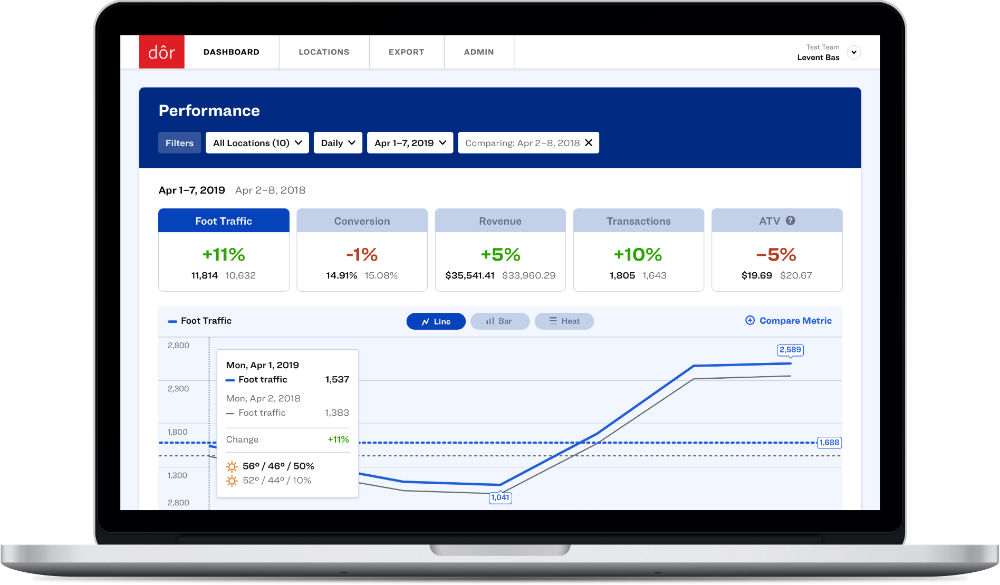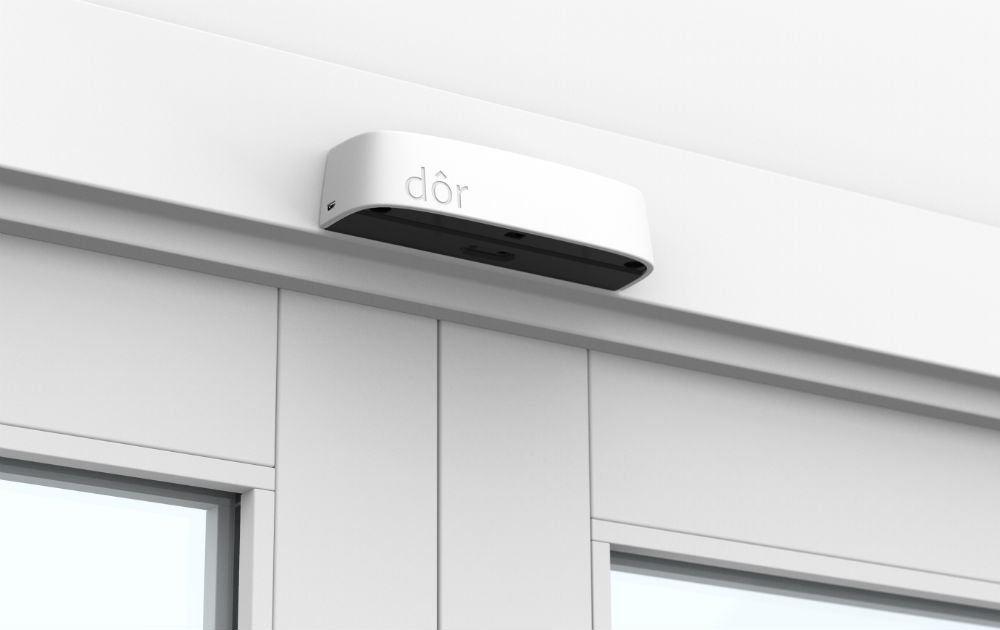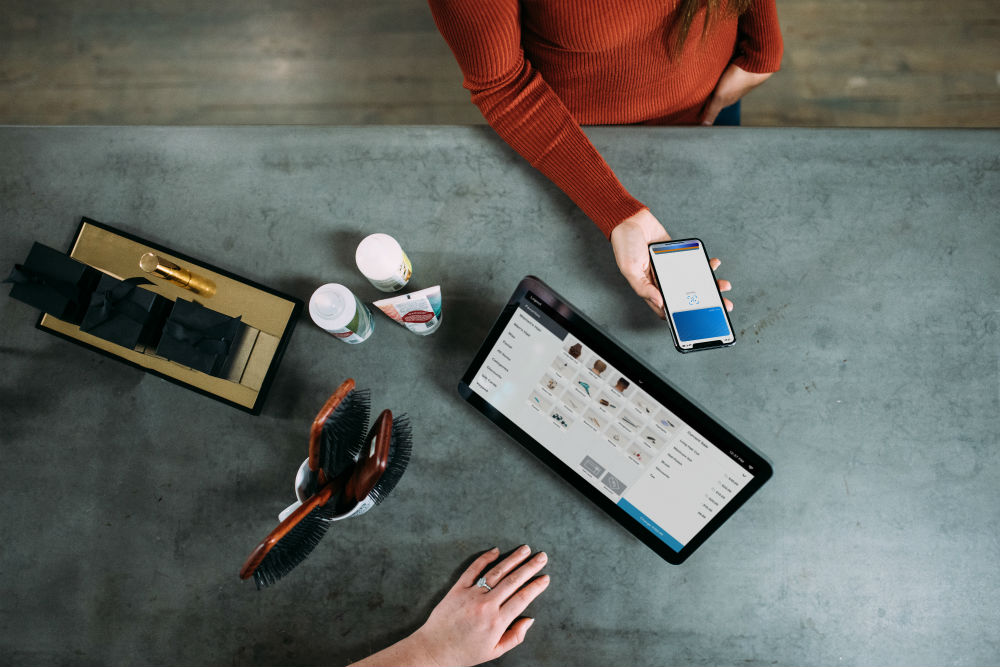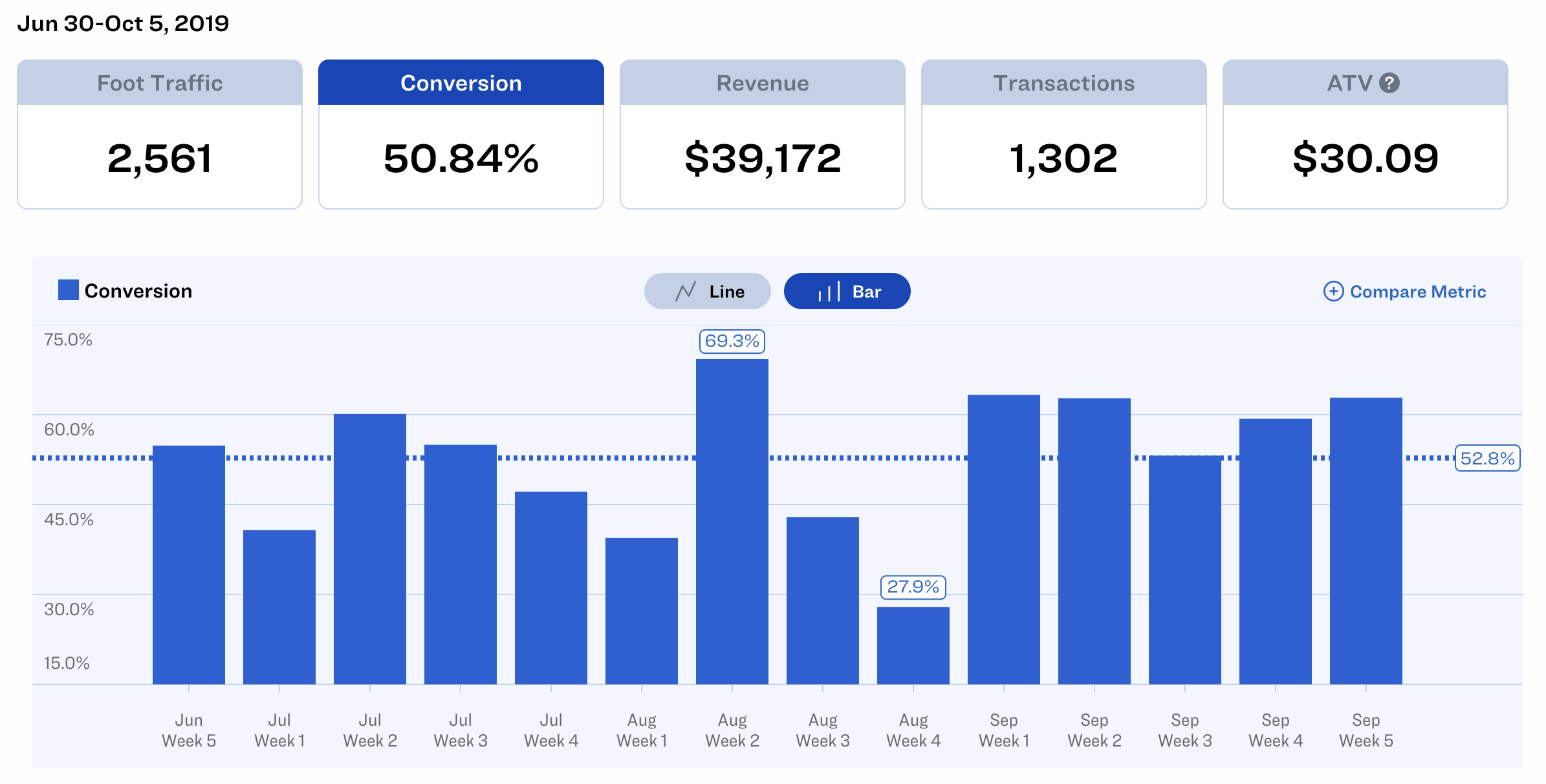Data may not be the sexiest thing in the world (or is it?), but it’s incredibly important for any retailer who wants to stay competitive. The numbers in your business — from foot traffic and revenues to your inventory levels and expenses — should always be on your radar so you can effectively gauge the health and performance of your retail stores.
That said, numbers alone don’t tell the whole story. To gain meaningful insights, the data must be presented in a user-friendly way, and in some cases, you need to connect multiple data points and metrics to glean action steps that’ll help you improve.
How can you accomplish that? Two words: retail analytics.
What is retail analytics?
Retail analytics refers to the processes and techniques used by businesses to discover, collect, and analyze retail data.
Analytics play a critical role in just about every area of a retail business, from sales and marketing to inventory management and operations. Simply put, retail analytics lets you harness data and tap into its potential.
Why is retail analytics important?
When leveraged properly, data and analytics can lead to a healthier and more competitive business. Consider the following:
1- You’ll launch more effective sales and marketing strategies
Retail analytics allow you to get to know your business and customers at a higher level, which can then lead to ideas on how to best market and sell your products.
For example, if you know that a particular in-store display is successful at getting customers to buy a particular item, then you can find ways to replicate the results and drive even more sales.
Or, if you know what makes your customers tick (i.e., based on their behavioral data), then you can figure out what types of messaging to use in your marketing and advertising campaigns.
2- You’ll improve customer satisfaction
Retail analytics can surface valuable insights — including the factors that keep people in your store and the things that are driving them away.
Knowing these things will aid you in designing a better customer experience (be it in-store or online) so you can ensure that shoppers stay happy and satisfied.
3- You’ll optimize your operations
In some cases, retail analytics can help improve your operations and processes.
A good example of this can be seen in foot traffic analytics solutions, which can shed light on a store’s peak hours and traffic trends. That data can then be used by the retailer to optimize their staff rosters and ensure that they have the right amount of associates on the sales floor at the right time.

4- You’ll stop wasting resources
Leveraging retail analytics can lead to better resource allocation in your business. You’ll be able to devote more time, energy, and funds towards the strategies, products, and initiatives that are driving growth versus the ones that are draining your cash.
Regularly tracking your metrics also enables you to spot issues like shrink early on, so you can nip them in the bud.
The state of retail analytics: trends and stats
The retail analytics market is growing rapidly. According to a report by Research and Markets, the global retail analytics market is expected to expand at a rate of 18% from 2019 to 2025 and will be valued at over $9.5 billion in five years.
Businesses are also investing more in the space, and companies will increasingly consider data and analytics as part of their competitive advantage. According to Gartner, by the year 2020, a whopping "90% of corporate strategies will explicitly mention information as a critical enterprise asset and analytics as an essential competency.”
There are multiple factors driving this growth. For starters, more retailers are adopting cloud-based software, as well as technologies like RFID, in-store WiFi, and the Internet of Things. And since data and analytics are often built into these technologies, businesses now have more information at their fingertips.
In terms of trends within the retail analytics market, here are some of the things that are currently making waves — and will continue to do so in the near future.
➣ Predictive analytics
This often refers to an analytics system that uses data mining, predictive modeling, and machine learning to analyze data and predict what will happen next.
Predictive analytics aims to take the guesswork out of the equation, so retailers can be more confident about the courses of action they decide to take.
➣ Prescriptive analytics
Certain solutions in the market have become so intelligent, that they’re not just able to predict what will happen next, they can also prescribe a course of action for the retailer.
For example, there are retail analytics solutions that can recommend which items to markdown, based on the retailers’ sales and inventory data.
➣ Customized analytics solutions
We can also expect the rise of customized analytics solutions.
The data needs of businesses can vary from one company to the next, so it makes sense that providers will come up with tailored offerings or customizable platforms that let companies get their hands on the specific data they need.
Types of retail analytics
What types of data and analytics can you tap into? Consider the following.
• In-store analytics
In-store analytics refers to the systems and processes retailers use to measure what’s happening within a retail store. The common metrics associated with in-store analytics are foot traffic, dwell time, and conversion rate, among others.

Click here to discover how a people counting solution like Dor can help you understand your foot traffic data and how to utilize it to make more profitable business decisions.
• Inventory and product assortment analytics
Inventory is the bread and butter of many retailers, which is why tapping into stock and product assortment data is essential. The metrics that are typically associated with inventory include stock turn, GMROI, and sell-through rate.
Related: 15 Key Metrics (KPIs) to Measure Retail Store Performance
• Web analytics
If you run an online store, then having a handle on your web analytics is a must. Your key metrics here would include online traffic, sales, and conversions.
• Customer analytics
Customer analytics is all about… well, your customers. This encompasses KPIs such as your Net Promoter Score (NPS), customer retention rate, churn rate, customer loyalty, and more.
How to practically utilize retail analytics services for your business
Now that you have an understanding of what retail analytics is, let’s look at the ways that you can use it in your business.
1. Focus on the data and metrics that matter most to your business
Not all metrics are created equal. While there are some general retail KPIs that you should track, the weight that you give each metric and the frequency for which you measure your KPIs will depend entirely on your business. A particular metric may be important to some retailers, but for others, not so much.
In order to determine the types of metrics you should be tracking, consider the following factors:
➣ Your main objectives
The best way to figure out which metrics to track is to identify your business goals. What do you want to achieve? What does success look like to you? The answers to these questions will point you to the right data points and metrics.
For example, if your main goal is to increase your bottom line, then your key metrics would be things like revenue and margins. On the other hand, if your objective is to increase customer satisfaction, then your KPIs would be your NPS score and customer retention rate.
If you’re unclear about what you should be measuring, start by reviewing your company objectives, and then determine the most relevant metrics. It’s also helpful to know when you want to achieve your goals; doing so will allow you to figure out how often you should be checking in on your KPIs.

➣ The type of business you have
Not all metrics will be relevant to your business. For instance, while same-store sales may be a critical metric for multi-store retailers that have been operating for years, it’s not the best measure of success for a brand new retail store.
In the same vein, a pop-up store whose main objective is to provide a rich customer experience would have different KPIs than a convenience store whose sole purpose is to sell products.
The main takeaway? Don’t just measure things for the sake of doing so. Identify the metrics that make the most sense for your company, and discard the ones that are irrelevant to your business type and goals.
➣ The campaigns or initiatives that you’re running
A specific campaign or initiative could bring certain metrics to the forefront. Let’s say you’ve set up a new window display and want to measure its effectiveness. In this instance, you should be measuring your foot traffic.
Or, perhaps you just started stocking a brand new item and you’re not sure if you should re-order it. In this case, you’d want to measure sell-through and stock-turn.
2. Use clever tools
Already know what you should be tracking? Great. The next step is to arm your business with solutions that will allow you to collect, measure, and analyze data. The right solutions will vary, depending on the metrics you’re tracking.
If you’re a brick and mortar store that wants to measure foot traffic, for example, then you’ll need a people counter solution like Dor, which lets you count your store's visitors and helps you see how factors like marketing and the weather affect your business.
Related: 7 Factors That Affect Foot Traffic for Retailers

You would also need a retail analytics platform for measuring your in-store sales, inventory levels, customer engagement, and more.
If you run an online store, then you definitely need a web and ecommerce analytics solution so you can see how many people are looking at your products, how much revenue your site generates, and more.
But no matter what type of solution you decide to use, make sure it can do the following:
➣ Provides historical data
Choose a solution that can store historical data, so you can spot long-term trends in your business and compare your current performance from previous periods.
Historical information can be incredibly valuable, as it sheds light on the great (and not-so-great) decisions you’ve made in the past, so you can learn from your mistakes and replicate the things that went well.
➣ Enables you to access your data from anywhere
Ideally, your retail analytics solution should be cloud-based and mobile-friendly, so you can view, analyze, and download your data from anywhere. This allows you to have a handle on your business’ performance even when you’re not at the store.
Having the right data at your fingertips also enables you to make decisions quickly and from anywhere.
➣ Integrates with other tools
Choose a system that can integrate with the other platforms you’re using in your business. This will allow you to connect the dots between various data points and metrics, so you can have a more comprehensive view of your business performance. (More on this in a bit.)
Dor serves as a great example of a tool that does just that. Dor’s foot traffic analytics solution connects with all leading POS systems in the market, so you can quickly see your conversion rates and identify correlations between foot traffic and other metrics — like average transaction value and basket size.
Click here to discover how a people counting solution like Dor can be installed in your store in just minutes and start showing you your foot traffic right away.
3. Look at how multiple data points relate to each other
A single metric can’t give you the big picture of what’s going on in your business. As mentioned earlier, you need to connect different metrics or data points in order to gain a complete view and understanding of how your business is doing.
Consider combining various reports and analyze how different data points or metrics relate to one another.
Here are some examples:
➣ Foot traffic and sales
Getting more visitors to come into your store is great, but an even more important measure of success is how well you turn those visitors into paying customers. The only way to figure that out is to calculate your conversion rate.
You can do this using the formula:
Number of Sales / Total Number of Visitors x 100
Or you can do it by integrating your people counter with your POS system.

➣ Ecommerce sales in relation to your brick and mortar locations
If you have online and offline stores, it’s worth analyzing how the two channels affect each other. Some retailers are finding that physical stores can actually increase online sales, thanks to the brand awareness and credibility that brick-and-mortar locations can bring.
You may want to see if the same trend is present in your business. One thing you could do is look at where your online visitors are located. If you notice that your ecommerce shoppers are coming from locations where you have a brick-and-mortar store, then that could indicate that your physical shops are helping you drive traffic online.
➣ Revenues in relation to different types of customers
It’s helpful to understand how various customer segments affect your bottom line.
Analyze how much money different shoppers spend in your stores. How do your millennial shoppers differ from your Gen X customers? Do your online shoppers spend more compared to brick-and-mortar customers?
By looking at your revenues in relation to shopper data, you can better understand which of your customer segments are the most profitable — and this could ultimately lead to smarter decisions around marketing, customer service, and more.
Related: 40 Ideas to Boost Retail Foot Traffic and Increase Sales
4. Monitor your metrics consistently
Dealing with retail analytics isn’t something you do once or twice. You need to conduct reviews regularly — daily or weekly, depending on the metric.
Constantly tracking your KPIs will allow you to spot issues or areas of improvement early on before they become larger problems. For instance, if your weekly sales took a larger-than-usual hit, then you’ll want to catch that red flag as soon as possible so you can take action. Having your sales numbers in front of you will enable you to see the issue immediately.
A good way to ensure that the right metrics are always on your radar is to create a dashboard displaying your KPIs. Doing so keeps your metrics and goals top of mind, so you can spring into action when you need to.
Another pro tip? Track and analyze your data consistently over a long period of time. This is the only way to get meaningful insights that will positively affect your business in the long-term. Looking at your data and results over a large timeframe can surface trends you can use to improve.
Let’s say, you noticed a sales spike that happens at the same time every year for the past 2-3 years. Armed with that insight, you dig further into what happens during that period, so you can capitalize on the opportunity and increase your sales even more.
5. Don’t rely solely on technology
Retail analytics tools are important but don’t rely on them alone to give you the information you need. While clever software and algorithms are incredibly effective in collecting and analyzing data, don’t discount the value of having a human touch in your retail analytics efforts.
Make it a point to gather qualitative information from the people who work in your business. Talk to your front-line staff to learn about their observations, then marry that information with the quantitative data from your technology solutions.
You also need a human touch when interpreting data. Retail analytics solutions can offer graphs and charts, but it’s us humans who give meaning to those numbers and reports. By empowering key members of your team to play a role in analyzing and interpreting your retail data, you can bring different perspectives to the table and pave the way for a deeper understanding of your business.
6. Collaborate with your customers
Most retail analytics initiatives run in the background, and they work by subtly collecting sales, product, and behavioral data. This certainly keeps things efficient and ensures that your data collection efforts don’t get in the way of the customer experience.
But every now and then, it’s worth being more active with your data collection efforts. This is particularly true when it comes to your customers.
Silently following shoppers around and getting their information comes off as creepy and can turn people off. It’s also important to note that there’s more to your customers than just their demographic and behavioral data. Information such as shopper preferences, interests, as well as their likes and dislikes can be valuable in helping you understand them at a deeper level.
And often, these types of details can only be obtained by getting people to actively share more about themselves with your brand.
That’s why you want to make data collection a collaborative process with your customers. Encourage them to voluntarily share their details and do it in a fun and engaging way. This not only allows you to get to know them better, but it strengthens the connection that shoppers have with your brand.
Many retailers are using interactive quizzes or exercises to get to know their customers. The skincare retailer Kiehl's, for example, has in-store touchscreens that shoppers can use to customize their purchases. Aside from helping people find the right products, this initiative gives the brand the opportunity to gather data about its shoppers.
5 retail analytics companies to watch in 2021
Retail analytics isn’t something that you can do on your own. You need technology partners and solution providers who can arm you with platforms and tools that will help you make sense out of all your data.
In this section, we’ll be looking at some of the retail analytics companies that can do just that.
• Dor
Dor is an in-store analytics solution that enables you to measure foot traffic and understand the people visiting your store. Dor offers the world’s first thermal-sensing people counter, a device that can accurately and efficiently count your visitors.

Dor takes minutes to install, requires no calibration, and doesn’t rely on your in-store network, making it the best people counter in the market today. What’s more, Dor connects to your POS system, so getting your conversion rate is a breeze. The cloud-based solution also works on mobile, which means you can access your data from virtually anywhere.
• Kissmetrics
Kissmetrics is an analytics and marketing platform that offers advanced insights into your audience. The software lets you see how your customers are behaving across multiple channels, so you can get a clear understanding of their shopping journeys.
Kissmetrics also integrates with apps like Facebook and Instagram, making it simple to create highly-targeted social media campaigns based on the data you’ve uncovered using the software.
• Alloy
Alloy is a digital supply chain platform that pulls data from suppliers, brick-and-mortar retailers, and ecommerce merchants to provide consumer brands with valuable product and retail intelligence.
Perfect for brands that sell through various retailers and channels, Alloy captures POS and inventory data from multiple sources, and displays everything in a single platform. This makes it easy for brands to view and analyze data which, in turn, helps them make smarter decisions when it comes to which products to sell and where.
• Tableau
Tableau is a leading business intelligence and analytics platform that lets companies quickly organize and visualize data.
If you’re sitting on a ton of raw data in your company, Tableau can help you convert everything into an easy-to-read format (i.e., tables, charts, and graphs) so you can analyze the information and derive the insights and action steps you need to take your business forward.
• Mixpanel
Mixpanel is a powerful customer analytics solution that lets you collect and analyze user data across your websites and apps.
One of its key capabilities is behavioral analytics, which makes it easy to understand how your customers are behaving and why. Mixpanel has visualization tools that show how people explore your website and app, so you can learn more about their journey, roadblocks, and path to purchase.
Retail analytics will give you a competitive advantage
There’s no question that data is incredibly valuable in this day and age. It’s no wonder that the quote “data is the new oil” has been making rounds for the past few years now. But it’s important to note that data by itself doesn’t give you much. To truly extract value out of data, you must have the right analytics tools and you need to learn how to use them properly.
Hopefully, this guide gives you the knowledge you need to effectively leverage analytics in your retail business.